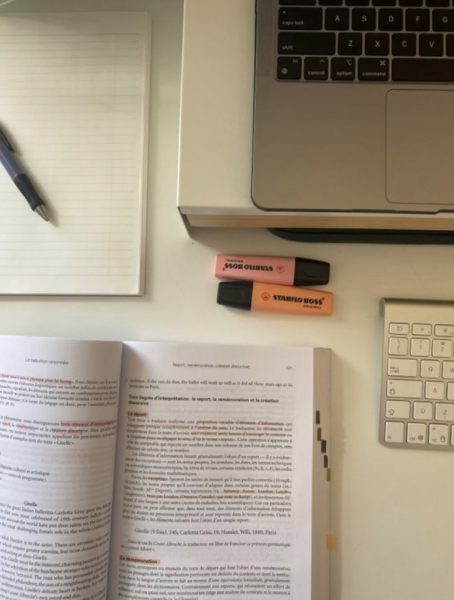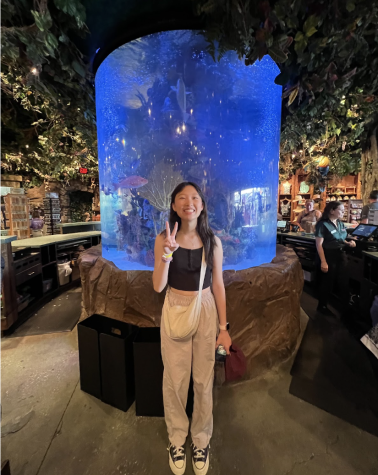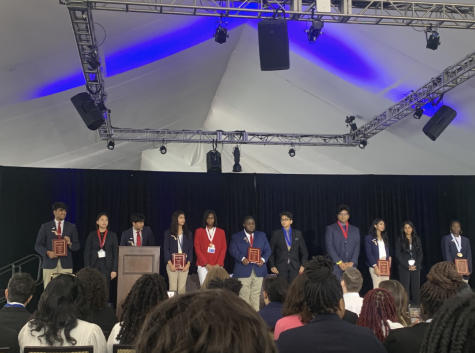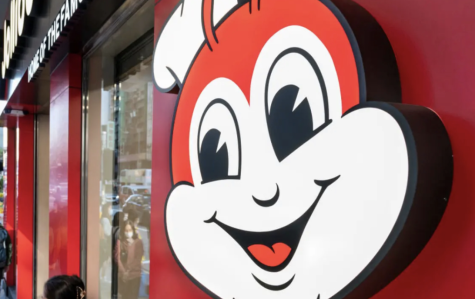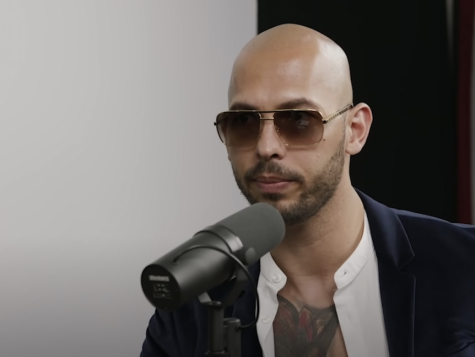TO PIMP A BUTTERFLY BRINGS NEW STYLE
May 6, 2015
Kendrick Lamar recently released his anticipated album To Pimp a Butterfly and has received predominately positive reviews for his diverse mix that emphases problems in the community.
Photo By: Whitten Bumbalough, Photo Manager
By: Logan Zelk, Reporter
When Kendrick Lamar first came out on the scene, he was nothing but remarkable. He brought an air of sophistication in his lyrics that layered itself in a good sense of vernacular and story telling, something that had been a criticism in rap for some time since the disappearance and decline of past major rappers, such as Nas, Biggie, and Tupac, and his new album, To Pimp a Butterfly, further exemplifies his influential standing in today’s rap.
Good Kid: Mad City, Lamar’s last album, both busted charts and people’s languish with current hip hop and brought in a scathing look at issues within the black community that Lamar noticed during his days growing up in Compton, Los Angeles, and those within the wealthy community he faced as a rapper, from the death of childhood friends to rape and murder (one instance told tearfully in the song “Sing About Me”) to alcoholism (Swimming Pools) to issues with wealth leeches (Don’t Kill My Vibe).
To Pimp A Butterfly is not only a serious departure in that it revamped a completely different sound theme, recalling back to heavy jazz influence and beat styles of the 90’s gangster rap, but also in that it evolved to a much stronger message, characterizing Lamar’s growth as a rapper, a visionary, and an activist.
Senior Dominic Proscia says, “It’s in inspiring. I can feel the anger, I can feel the pain, the suffering, and the transformation that Kendrick experienced in the interim of his albums and it relates to his music.”
Several themes span To Pimp A Butterfly (TPAB), revolving around Kendricks new life in wealth, his reflection on Compton, and his visit to South Africa as he got more involved in activism.
Several parallels can be drawn in the album that resemble historical sects, such as the difference between The Blacker the Berry and i, which are seen as representative of Malcolm X’s militant revolution for the self-reliant black community in the former and Martin Luther King Jr.’s positive reformation activism in the latter. The album juxtaposes these two, and many other similar pairs, to add emphasis and bring out the integral messages of both, and thus allow them to be more adequately absorbed and considered.
Senior Daniel Cawley says, “The music had a great beat, and, best of all, the music actually had meaning and message to it, where a lot of radio tunes are rather manufactured today.”
While a good portion of the album is about racism in present-day society, another good deal of the album considers different scopes of issues as well, such as abortion, capitalistic greed, and infighting within the black community. King Kunta speaks of Lamar’s return to Compton for whatever reason, and his dismissal of those who feigned friendship to Lamar to gain his famous good graces when they left him to hobble when he wasn’t.
If These Walls Could Talk speaks of how a distraught woman looks to Lamar for comfort because she had to partake in an abortion, since the father was in jail and she could not support the baby. u describes Lamar’s hateful inner thoughts as he perseveres through the injustices he caused and lived through.
All in all, TPAB is not only incredibly memorable and thoughtful, but also impactful in it’s expression and composition. It will certainly contend for any award ceremony it is entered and serves to further extend Lamar’s reputation of being one of the best rappers alive.




























